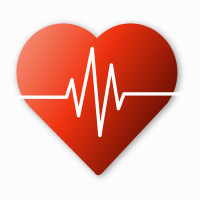Judy is well known around Otago. She’s been president of the New Zealand Occupational Health Nurses’ Association and on the Health and Safety Association of NZ Professional Standards Committee. She’s also spent time working in a broad range of industry sectors including mining, electrical transmission and tertiary education. Therefore, she is well placed to lead a discussion on health and wellbeing.
The first thing Judy did during her interactive session was to challenge us to define both ‘Health’ and ‘Wellbeing’. The buzz around the room proved that this wasn’t as easy as it seems. The consensus was that health focuses on physiological and psychological indicators that are generally associated with a hazard that could cause harm. Things like being able to hear, breath and not being poisoned while at work were some more obvious examples.
Whereas wellbeing was about taking a holistic approach to someone’s lifestyle to encourage resilience. This is where discussing stress and fatigue management can be useful and supporting people who are dealing with addiction comes into play. The challenge is offering encouragement without infringing on people’s right to live their life outside of work as they see fit!
Judy also referenced several useful sources that are worth investigating.
Gordon Brown, who was then Chancellor of the Exchequer at the time argued that the UK should aim for both ‘full and fulfilling employment’ for people. Where work in the UK could be a source of well-being, personal growth, fulfilment, autonomy and meaning – in other words, that the jobs available in today’s labour market need to offer ‘Good Work’.
No Business Wealth without Workers’ Health: “A healthy workplace is “one in which workers and managers collaborate to use a continual improvement process to protect and promote the health, safety and wellbeing of all workers.”
WorksafeNZ Health isn’t just physical
Work-related health strategic plan
Ultimately, the Health and Safety profession needs to practice what we preach. Much like they say during pre-flight safety briefings ‘Please fit your own mask securely before attempting to assist others’. I’m not the only one that needs to do a bit more exercise and contemplate my calorie intake. Also, based on the number of hands raised during Lance Burdett’s presentation, our mental health and wellbeing needs to be everyone’s top priority.
The COHSF committee would like to formally thank Judy for taking the time to come and speak to us and would welcome him back anytime.
QUICKFIRE QUESTIONS: WELLBEING AND THE WORLD IN GENERAL
1. What has been the highlight of your working career?
Being a part of the HASANZ Grading committee
2. What has been the hardest decision that you have had to make during your working career?
To go underground in mines when I don’t like confined spaces
3. What was the hardest lesson that you have had to learn?
People will do what they will do and we need to guide rather than ‘tell’
4. If you could go back to your first year in your professional role, what advice would you give to your younger self?
Do more research and academic study
5. What advice would you give to people starting out in their health and safety career?
Find good mentors and a support network as there will be bumps in the road
6. What is the key message from your presentation?
Understand the difference between health and wellness, and how to put them into practice.
7. What is the one thing you would like the audience to do when they leave the conference?
Go back to your business, look at the risk assessment and make sure health is a part of it
GET IN CONTACT
Website: www.otago.ac.nz
Email: judy.currie@otago.ac.nz
LinkedIn: hwww.linkedin.com/in/judy-currie
